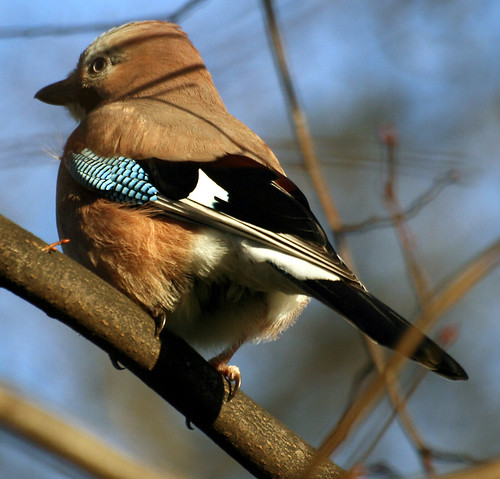 I received several questions about how we build the bird boxes in my woodshop class so I decided to give a brief description here. It is only very rarely that I come across a kid who doesn't want to learn about building a good birdhouse and this must be the all-time classic woodshop project. I would also highly recommend this project as an excellent project for homeschoolers to study earth science and/or the biology of animals where the potential for hands-on extension projects are as big as the sky. Although I use rough cut boards from the lumber yard you could also use standard 3/4" boards from the local home improvement store. As (FIGURE- 1) shows I start out with six pieces of wood which consists of two sides, a backboard, a door, a top, and a bottom.
I received several questions about how we build the bird boxes in my woodshop class so I decided to give a brief description here. It is only very rarely that I come across a kid who doesn't want to learn about building a good birdhouse and this must be the all-time classic woodshop project. I would also highly recommend this project as an excellent project for homeschoolers to study earth science and/or the biology of animals where the potential for hands-on extension projects are as big as the sky. Although I use rough cut boards from the lumber yard you could also use standard 3/4" boards from the local home improvement store. As (FIGURE- 1) shows I start out with six pieces of wood which consists of two sides, a backboard, a door, a top, and a bottom.
1. Attaching Sides To The Backboard
As seen in (FIGURE-2) the two sides are attached to the backboard. To get these two sides in place perfectly I first instruct the kids to make a mark on the backboard 3" down, then use a square to make a perfectly straight line across it. I stress that this line must be squared right-on or the door will not open correctly later on so don't let your square slip off the boards edge while marking.
The next step is placing the top of each side exactly on that line while making sure that the side is also flush with the outer edge of the backboard. My students then use a pencil to trace the outline of the two sides on the backboard. This way they can then make two perfectly centered marks so that they can then drill small pilot holes into the backboard that will make screwing on their sides easy and a no-miss task. Be sure that you hold your drill at 90 degrees straight so that your pilot holes are straight.
2. Attaching Door And Hinge Screws
In (FIGURES 3 & 4) I show how we insert the hinge screws into the door. I use dry wall screw of varying lengths depending on the woods thickness. First I custom cut the door to fit inside the space of the two sides, then measure 1" down from the top of each side and make a mark as shown in (FIGURE-2). Extend this mark around to the outer side as shown in (FIGURE-3). With your door now loosly snug between the sides make a mark from the doors center around to the outer part of the side and where your two lines intersect, that is where you then drill a pilot hole for your "hinge" screws. (SEE FIGURE-3) With your hinges now in place your door should open and close. I would suggest adjusting the two hinge screws so that the door is very "snug" but not tight. It only has to be opened once a year to clean out the old nest so "snug" is good.
Now all you have to do is attach the top and bottoms to complete the box. By the way I cut a 15 degree angle on one side of my tops using the table saw so that they will fit nicely to the backboard. If you don't have a table saw then you can still just attach the top "as-is" and it will still work just fine as far as the birds are concerned. I also teach my students to drill pilot holes for all their screw holes to prevent the wood from crackings. It's also a good idea to drill a bunch of 1/4" holes in the bottom for good drainage and extra ventilation. Another good practice is to have the kids use a chisel or screwdriver to scratch up the inside of the door so that the young birds have a rough surface to attach their claws for climbing out of the birdhouse. This is especially important if using smoothly planed wood.
Good luck and I hope that you have as much fun building shelters for our feathered friends as I have had.

















No comments:
Post a Comment